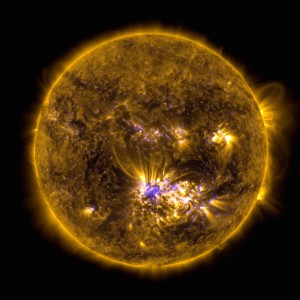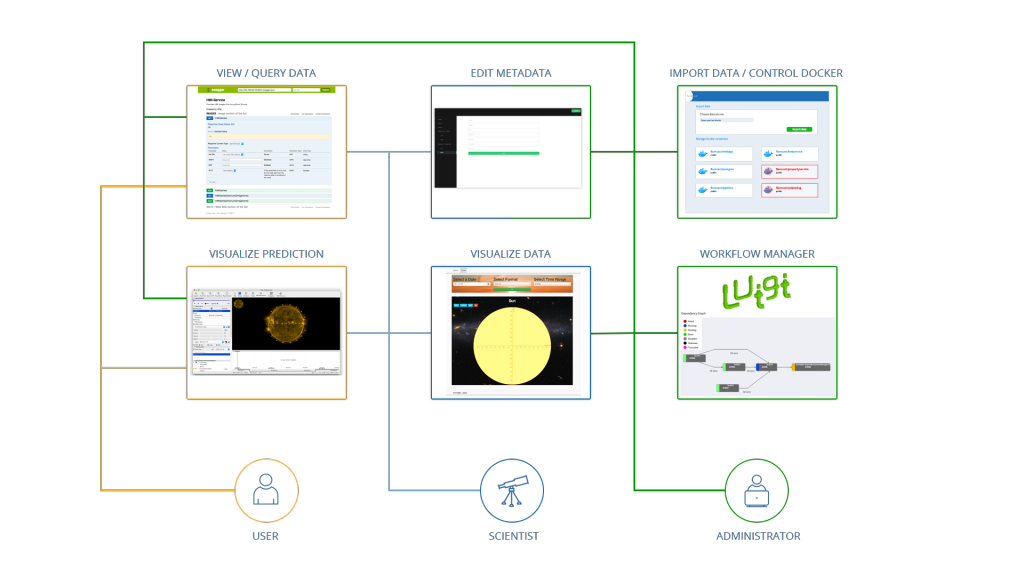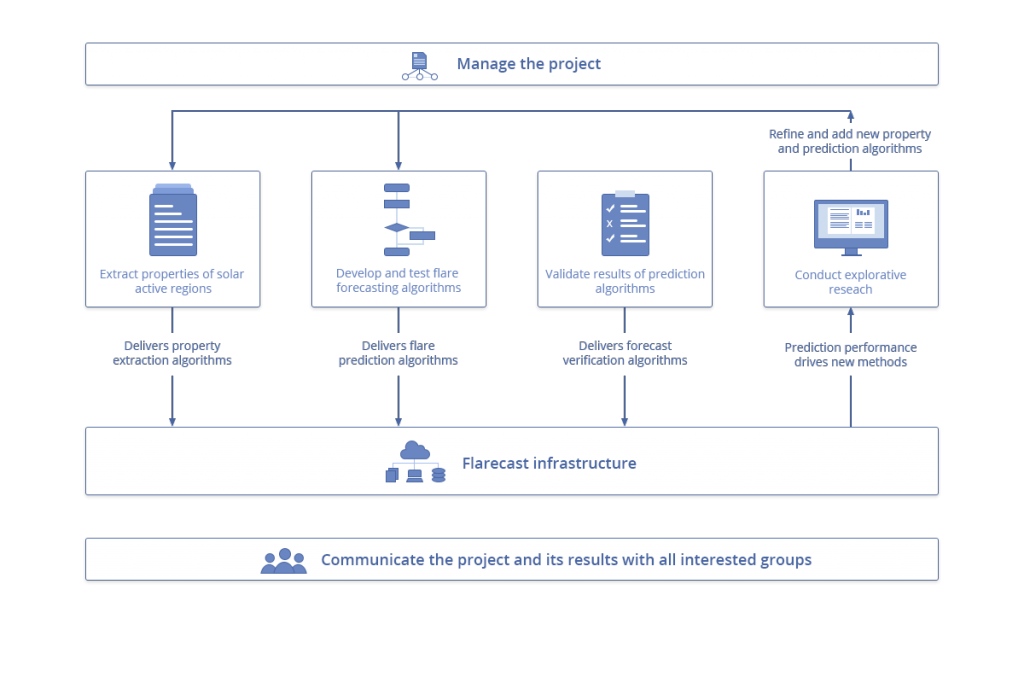PROJECT SUMMARY
Project Summary
Space weather can have detrimental, and in some cases catastrophic, effects upon a multitude of technologies on which we depend as part our daily lives. Adverse space weather is now known to result from solar flares and coronal mass ejections released from the turbulent and highly complex magnetic fields of active regions. Understanding how active region magnetic fields evolve and produce these events is therefore of fundamental importance to developing accurate and reliable space-weather monitoring and forecasting capabilities.

Turbulent active region shortly before it unleashed an X-class flare. Image: SDO Angstrom 171 – magnetogram overlay, o7/12/2012 10:45
The multidisciplinary team at FLARECAST (heliophysicists, software engineers, mathematicians) developed an advanced flare prediction system based on automatically extracted physical properties of active regions coupled with state-of-the-art flare prediction methods and validated using the most appropriate forecast verification measures.
We extracted active region properties, such as area, magnetic flux, shear, magnetic complexity, helicity and proxies for magnetic energy, from solar magnetogram and white-light images in near-realtime using advanced image-processing techniques. Once active region properties had been extracted, they were correlated with solar flare activity and used to optimize prediction algorithms based on statistical, unsupervised clustering and supervised learning methods. This enabled us to validate our image processing and flare prediction algorithms before launching the near-realtime flare forecasting service, the first of its kind in the world.
FLARECAST formed the basis of the first quantitative, physically motivated and autonomous active region monitoring and flare forecasting system of use to space-weather researchers and forecasters in Europe and around the globe.
The primary objectives of FLARECAST were threefold:
1. To understand the drivers of flare activity and improve flare prediction
2. To provide a globally accessible flare prediction service that facilitates expansion
3. To engage with space-weather end users and inform policy makers and the public
The main benefits consist of a significant enhancement of our present knowledge on solar active region properties and evolution leading to flaring activity, a statistically rigorous set of active region properties that future flaring activity can be predicted from and a functionally-expandable infrastructure allowing for simple, but suitably verified, transition of scientific research into operational space-weather applications.
HOW FLARECAST WORKS
A custom visual outcome oriented both towards the average and the scientifically inclined user, served by a robust administration management.

WORK PACKAGES

